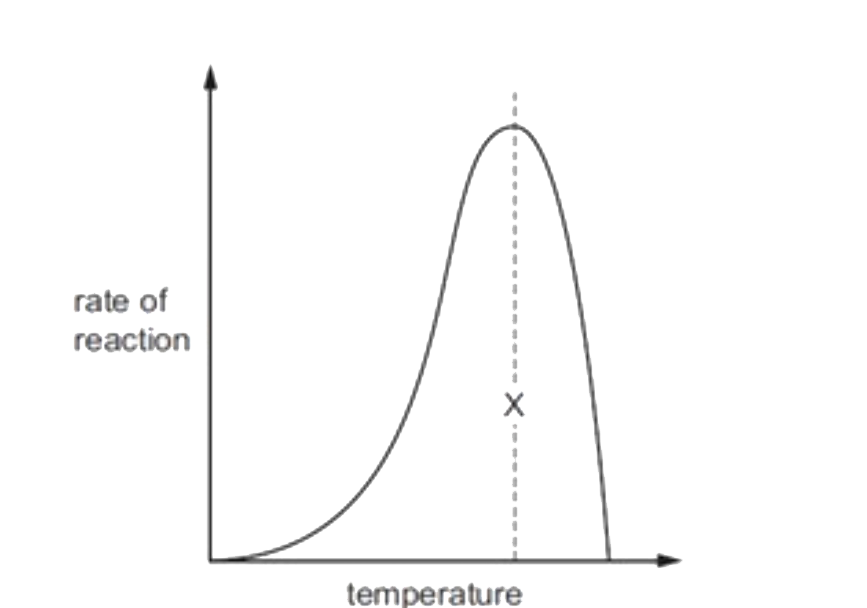The bonds between the enzyme and substrate must be
Weak and long-lived
Weak and short-lived
Strong and long-lived
Strong and short-lived
The correct Answer is:B
To answer the question regarding the bonds between the enzyme and substrate, we can follow these steps:
1. Understanding Enzymes and Substrates:
- Enzymes are biological catalysts that speed up chemical reactions. They are typically proteins that bind to specific molecules known as substrates.
2. Formation of Enzyme-Substrate Complex:
- When an enzyme interacts with its substrate, they form a temporary complex called the enzyme-substrate (ES) complex. This is a crucial step in the catalytic process.
3. Types of Bonds Formed:
- The bonds between the enzyme and substrate are not strong covalent bonds. Instead, they are characterized by weaker interactions. There are four main types of bonds or interactions that can occur:
- Hydrogen Bonds: These are weak attractions between a hydrogen atom covalently bonded to an electronegative atom and another electronegative atom.
- Van der Waals Interactions: These are weak attractions that occur between molecules due to transient local partial charges.
- Hydrophobic Interactions: These occur when nonpolar molecules aggregate to avoid contact with water, which can play a role in the binding of substrates to enzymes.
- Electrostatic Interactions: These are attractions between positively and negatively charged groups.
4. Nature of the Bonds:
- It is important to note that these bonds are generally weak and short-lived. This means they can easily break and reform, allowing for the dynamic nature of enzyme-substrate interactions.
5. Conclusion:
- Based on the explanation, we conclude that the bonds between the enzyme and substrate are weak and short-lived. Therefore, the correct answer to the question is that the bonds are "weak and short-lived."
Final Answer:
The bonds between the enzyme and substrate must be weak and short-lived.
---
- Enzymes are biological catalysts that speed up chemical reactions. They are typically proteins that bind to specific molecules known as substrates.
- When an enzyme interacts with its substrate, they form a temporary complex called the enzyme-substrate (ES) complex. This is a crucial step in the catalytic process.
- The bonds between the enzyme and substrate are not strong covalent bonds. Instead, they are characterized by weaker interactions. There are four main types of bonds or interactions that can occur:
- Hydrogen Bonds: These are weak attractions between a hydrogen atom covalently bonded to an electronegative atom and another electronegative atom.
- Van der Waals Interactions: These are weak attractions that occur between molecules due to transient local partial charges.
- Hydrophobic Interactions: These occur when nonpolar molecules aggregate to avoid contact with water, which can play a role in the binding of substrates to enzymes.
- Electrostatic Interactions: These are attractions between positively and negatively charged groups.
- It is important to note that these bonds are generally weak and short-lived. This means they can easily break and reform, allowing for the dynamic nature of enzyme-substrate interactions.
- Based on the explanation, we conclude that the bonds between the enzyme and substrate are weak and short-lived. Therefore, the correct answer to the question is that the bonds are "weak and short-lived."
The bonds between the enzyme and substrate must be weak and short-lived.
Topper's Solved these Questions
- ANIMAL TISSUES BOOK - TRUEMEN BIOLOGY ENGLISHCHAPTER - ANIMAL TISSUES EXERCISE - MULTIPLE CHOICE QUESTIONS
193 Videos
- CELL- THE BASIC UNIT OF LIFE ( CELL AND ITS STRUCTURAL ORGANISATION )BOOK - TRUEMEN BIOLOGY ENGLISHCHAPTER - CELL- THE BASIC UNIT OF LIFE ( CELL AND ITS STRUCTURAL ORGANISATION )EXERCISE - MULTIPLE CHOICE ANSWER TYPE
308 Videos
Similar Questions
The graph shows the effect of temperature on the rate at which the enzyme in a biological washing powder digests and removes fruit juice stains .

Which statements explain the shape of the graph at temperatures higher than X ?
I. Bonds are broken between the R groups of the amino acids in the polypeptide chains of the enzyme.
II. There are more collisions between the enzyme and its substrate.
III. The tertiary structure of the enzyme is altered.
Iv. The shapes of the active site and the substrate are no longer complementary .
View SolutionAmong the statement given below, which statements /s is / are correct regarding the relationship between enzyme and substrate ?
I. Above a certain concentration of substrate , an enzyme reaches its maximum rate of reaction
II. Increasing the substrate concentration to a higher level doesn't reverse the effects of a competitive inhibitor.
III At high substrate concentration , a non competitive inhibitor no longer affects the enzyme activity .
IV. The higher the concentration of substrate the faster an enzyme can cataylse a reaction.
View Solution
Knowledge Check
The inhibitor which does not resemble the substrate in structure and binds to the enzyme at site other than the active site is called
Acompetitive inhibitorBnon-competitive inhibitorCactivatorDsubstrate analogue.
The ratio of the enzyme to substrate molecule can be as high as
View SolutionWhat happen when the bond formed between an enzyme and an inhibitor is a strong covalent bond ?
View SolutionFor the enzyme enolase, the substrate is
View SolutionSubstrate and product are stable in any enzyme - catalysed reaction. The transitional states between the stable substrate and the product in the reaction are
View SolutionWhich of the following source of enzyme and the substrate are correctly matched
View SolutionFormation of bond between which pair of substrates given below is not a type of dehydration reaction?
View SolutionPart of active site of enzyme where substrate is held is known as
View Solution
